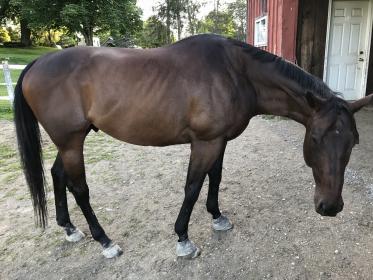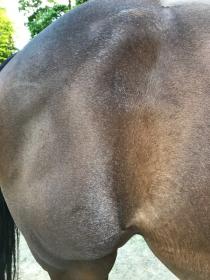Roan is a totally separate gene from gray. Roan horses have a roughly 50/50 mix of base (chestnut/bay/black/etc.) hairs and white hairs spread evenly throughout their coats, except that their points (head, mane/tail, & lower legs) are darker. Other than the foal coat and some slight seasonal variation, the horse stays roughly the same color throughout its entire life. Thoroughbreds don’t carry the roan gene, so your horse cannot be a true roan (nor does he have enough white hairs to be a roan). The roan gene is dominant; a horse must have one or more true roan parents to have a chance of being a roan.
Gray horses are born looking like whatever their base color is. As they age, they get progressively more white hairs. Some horses do this VERY slowly; some do it very quickly. Gray is also a dominant gene; the horse must have at least one gray parent in order to be gray. @Gainer, there is no possible way for two chestnut parents to produce a gray foal; either one of those Saddlebreds was incorrectly registered or the foals were not actually gray.
Lots of horses of all colors have white hairs sprinkled throughout their coats; most of these are probably caused by some variation of a white pattern of some sort, most of which we are just starting to identify.



